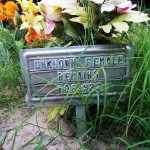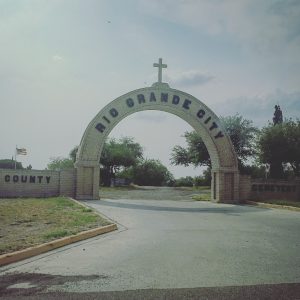Forensic anthropologists not only have a specific set of scientific skills (forensic archeology  and expertise in the human skeleton) and experience navigating the medicolegal system that allow us to play a vital role in the investigation of migrant deaths along the border, but as broadly trained anthropologists we are also able to approach this work in a culturally sensitive and appropriate way. We utilize the controlled and systematic approach of traditional archeological technique to recover the individuals from the cemetery while preserving the context of the burial information. We are able to analyze the skeletons and assess the living characteristics of each person (like how old they were when they died, were they male or female, how tall were they, etc…). We know that each person represents an open forensic case and approach this work in a way that preserves the chain of custody and produces proper documentation to allow for an investigation into personal identity.
and expertise in the human skeleton) and experience navigating the medicolegal system that allow us to play a vital role in the investigation of migrant deaths along the border, but as broadly trained anthropologists we are also able to approach this work in a culturally sensitive and appropriate way. We utilize the controlled and systematic approach of traditional archeological technique to recover the individuals from the cemetery while preserving the context of the burial information. We are able to analyze the skeletons and assess the living characteristics of each person (like how old they were when they died, were they male or female, how tall were they, etc…). We know that each person represents an open forensic case and approach this work in a way that preserves the chain of custody and produces proper documentation to allow for an investigation into personal identity.
As anthropologists we understand that while we serve an important practical role in the identification of the migrants, we are also situated within a very large and complex set of realities occurring not only in the Texas borderlands but also globally. Locally we must consider the various stakeholders impacted by this process. This includes the families of the missing, law enforcement, as well as the local community members (among others). Since the beginning of this project we have considered the feelings of the families of the missing. We have worked to treat the dead with respect and dignity as we work towards their identification. We are transparent with our findings and provide families of the identified with copies of the field recovery reports that pertain to their loved one as well as copies of the scientific reports, along with an explanation of what they mean and how that lead to an identification. Invitations for us to work on these identifications come from the local medicolegal community, so our interactions with these stakeholders has been extensive. What we have learned over the years is that the law enforcement community must find ways to balance their resources, focuses and efforts between the living and the dead. They have a community to serve and protect, lives to save when distress calls come from the dessert and bodies to recover. As the number of bodies has increased dramatically over the last few years they have struggled to continue that balance as resources have not similarly increased. While we are mindful of how we are working within a broader system and we can begin to use this awareness to guide our work, we are aware that we are only beginning to recognize how we fit into this sociopolitical landscape and that we currently have more questions than answers.

As we move into a new community it is especially important to consider how we are directly and indirectly impacting the community of Rio Grande City with this work. We must understand that the community, as a border town, has been entangled historically in migration issues that are shaped by larger forces of economic globalization, racial division, and various forms of privilege and disadvantage. At each step of the planning and excavation process we must continue to ask ourselves how we are influencing the community from the larger and more long lasting impacts to the daily interactions and encounters at the cemetery and in the town along the way.
~KEL
